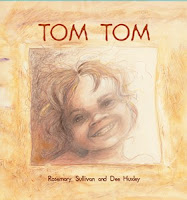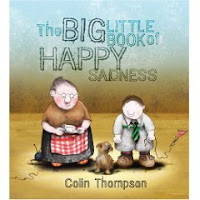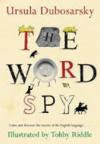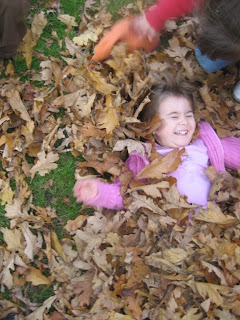 I wrote a post on 'The Challenge of Boys and Reading" in July in which I commented that boys are more likely to be attracted to books and reading when:
I wrote a post on 'The Challenge of Boys and Reading" in July in which I commented that boys are more likely to be attracted to books and reading when:".....the books and the reading event (whether at school, or reading with mum and dad) offer opportunities to discover, experiment, explore, learn new things, make them laugh, consider the curious or unusual, help them to play, see how things work, share trivia tricks and facts with other boys, explore the unknown, and generally do interesting things."
For many boys (like girls) the narrative form is the best way into literacy, but some boys are reluctant to read narratives. Our aim as parents or teachers is to develop boys who can read every imaginable genre when it is appropriate to their needs. We want them to read in a sustained way written text presented in traditional print forms (e.g. books, magazines, letters), electronic forms, or in fact text found anywhere within the child's world. So we should seek to explore any textual form available to introduce them to reading and then gently push them to explore other forms of reading, as well as to read in more sustained ways and for all imaginable purposes. I've tried below to offer a range of ideas for boys aged from beginning readers to young teenager. All are meant to offer an alternative pathway for pushing forward reluctant readers. They are roughly in order of increasing difficulty and age appropriateness, but some examples are relevant across all ages.
 Introduce them to magazines - boys will love to flick through the pages of magazines on topics that interest them. Something like National Geographic is ideal (or a children's version of this type of magazine like 'Kids Almanac'). If they are expendable (e.g. old National Geographics), let them cut out interesting pictures and get them to make a book by sticking them in and then labelling them. Later you can write words for them that they dictate or you can encourage them from a very early age to try to 'write' (see my previous post on 'When do children start writing' here) words that go with the pictures.
Introduce them to magazines - boys will love to flick through the pages of magazines on topics that interest them. Something like National Geographic is ideal (or a children's version of this type of magazine like 'Kids Almanac'). If they are expendable (e.g. old National Geographics), let them cut out interesting pictures and get them to make a book by sticking them in and then labelling them. Later you can write words for them that they dictate or you can encourage them from a very early age to try to 'write' (see my previous post on 'When do children start writing' here) words that go with the pictures.Explore websites together - from about 3 years most boys will love to explore computers with you. Choose some simple websites (I list a few on the sidebar of this blog site), National Geographic Kids is worth a look. The Australian Museum has a great site called 'Wild Kids' where lots of facts and pictures can be found about animals - great fun to explore (and it's reading!). Show them how you open the site. Then explore the pages of the site pointing to and reading words. Don't make this a reading lesson, the text is peripheral to the exploration, images etc. But you are 'warming them up' to print. There are some greats sites to explore on sharks, reptiles etc.
 Explore factual books together - boys love to learn new things. Borrow factual books from the library about space, dinosaurs, cars, trains, reptiles, sea creatures, insects, how things work etc. Boys will flick pages and look at pictures for ages. Sit with them and selectively draw attention to words. Perhaps use the book as a springboard to other activities (e.g. craft, drawing) and encourage the use of writing to label or supplement drawings. A brilliant example of this type of book is 'The Way Things Work' by David Macaulay (the author's website is also worth a visit here). This book explains with words, diagrams and pictures how things work, for example, electricity, pulleys, microscopes, smoke detectors etc. This can be flicked through or read. It isn't a simple book but is ideal for an older boy who isn't keen on stories but may respond to a more difficult factual book that will encourage him to read for more sustained periods. And this is one of our aims, to give them reading 'stamina'. Another great example (again) is 'Nat Geo Almanac 2010'.
Explore factual books together - boys love to learn new things. Borrow factual books from the library about space, dinosaurs, cars, trains, reptiles, sea creatures, insects, how things work etc. Boys will flick pages and look at pictures for ages. Sit with them and selectively draw attention to words. Perhaps use the book as a springboard to other activities (e.g. craft, drawing) and encourage the use of writing to label or supplement drawings. A brilliant example of this type of book is 'The Way Things Work' by David Macaulay (the author's website is also worth a visit here). This book explains with words, diagrams and pictures how things work, for example, electricity, pulleys, microscopes, smoke detectors etc. This can be flicked through or read. It isn't a simple book but is ideal for an older boy who isn't keen on stories but may respond to a more difficult factual book that will encourage him to read for more sustained periods. And this is one of our aims, to give them reading 'stamina'. Another great example (again) is 'Nat Geo Almanac 2010'.A sub-category of this approach is the use of 'key fact' books. Many boys will love books that offer a mix of drawings and pictures with facts about things that fascinate them. Some of these books use extended text but others use short 'sharp' statement with good accompanying graphics or images. Popular topic areas with boys include:
- Egyptology
- Jet planes
- Weather
- Animals of all kinds
- History
- Sport
- Science
- Engineering
 Here are a couple of examples:
Here are a couple of examples:1001 Unbelievable Facts, by Helen Otway (there is a whole series of '1001 Fact..' books, 'Backpack Books' published by DK)
100 Things You Should Know About Ancient Rome, by Fiona Mcdonald
Dinosaurs (Pocket Series), produced as part of a series of non-fiction books by DK Publishing
My Panda Book, by Stuart P. Levine. This is one of a series of books published in partnership with the Smithsonian.
 A wonderful recent example of a fact book that my wife bought for me (and which I've shared with my grandson) is 'One Small Step'. This was produced to commemorate the first moon landing on July 20th 1969. The book is a replica of a scrapbook put together by a 12 year old boy whose grandad was working in the Houston Control Room on the day when man first made it to the moon. It’s a collection of Moon-landing memorabilia (e.g. space menus, certificates, transcript of the first steps exchange etc), photographs and so on. It also has more recent space science information, including the future of space travel.
A wonderful recent example of a fact book that my wife bought for me (and which I've shared with my grandson) is 'One Small Step'. This was produced to commemorate the first moon landing on July 20th 1969. The book is a replica of a scrapbook put together by a 12 year old boy whose grandad was working in the Houston Control Room on the day when man first made it to the moon. It’s a collection of Moon-landing memorabilia (e.g. space menus, certificates, transcript of the first steps exchange etc), photographs and so on. It also has more recent space science information, including the future of space travel. Knock Knock Who's There: My First Knock Knock Book by Tad Hills is a great introduction to humour in books with answers under flaps.
The Everything Kids' Joke Book, by Michael Dahl offers Jokes for upper Primary children (aged 7-12 years) plus a second section on how to write jokes.
The Family Joke Book, by Brad Taylor
 Books that encourage boys to make and do things - there are many examples of books of this type. They show boys how to make simple things, conduct science experiments and so on. Places like the National Geographic stores can be a good place to look for books of this type. A well-known recent example is The Dangerous Book for Boys. This book offers a range of ideas for making and doing things. For example, how to make the greatest paper plane in the world, building a tree house, all about dinosaurs, making a G0-cart, how to go fishing, juggling, all about Australian snakes, skimming stones and so on. This isn't a simple book (about grade 4-5 standard) but the content will help boys to 'stretch' themselves. It is also a great book for boys to read and 'do' with an adult.
Books that encourage boys to make and do things - there are many examples of books of this type. They show boys how to make simple things, conduct science experiments and so on. Places like the National Geographic stores can be a good place to look for books of this type. A well-known recent example is The Dangerous Book for Boys. This book offers a range of ideas for making and doing things. For example, how to make the greatest paper plane in the world, building a tree house, all about dinosaurs, making a G0-cart, how to go fishing, juggling, all about Australian snakes, skimming stones and so on. This isn't a simple book (about grade 4-5 standard) but the content will help boys to 'stretch' themselves. It is also a great book for boys to read and 'do' with an adult. Graphic novels and comics - While this category often uses narrative, there are many good examples that are non-fiction. It seems the Graphic Novel is making a comeback in this digital age. A graphic novel uses a combination of text and art. They can include biographies, narratives, memoirs and journals, classic story retellings etc. For example, there are now graphic-novel editions of the works of Shakespeare, and many classics such as The Red Badge of Courage, Beowulf, Greek myths, The Adventures of Robin Hood, even The Canterbury Tales. Some people lump comics and graphic novels together but they are slightly different forms. Whereas the graphic novel uses more extended text mixed with illustrations and images, the comic makes use of the speech balloon and is usually restricted to narrative forms. There is still a place for comic books (see my previous post on this here). What the graphic novel offers is a carefully crafted interplay of image and word with many other devices used to draw attention to print (e.g. different fonts, sizes etc).
Graphic novels and comics - While this category often uses narrative, there are many good examples that are non-fiction. It seems the Graphic Novel is making a comeback in this digital age. A graphic novel uses a combination of text and art. They can include biographies, narratives, memoirs and journals, classic story retellings etc. For example, there are now graphic-novel editions of the works of Shakespeare, and many classics such as The Red Badge of Courage, Beowulf, Greek myths, The Adventures of Robin Hood, even The Canterbury Tales. Some people lump comics and graphic novels together but they are slightly different forms. Whereas the graphic novel uses more extended text mixed with illustrations and images, the comic makes use of the speech balloon and is usually restricted to narrative forms. There is still a place for comic books (see my previous post on this here). What the graphic novel offers is a carefully crafted interplay of image and word with many other devices used to draw attention to print (e.g. different fonts, sizes etc).It is not a new form, for example, well-known children's author Raymond Briggs has used the format to powerful effect with works like 'When the Wind Blows' (1986) that tells of the impact of an atomic blast on an elderly British couple who approach the impending disaster as if they were simply trying to survive the Blitz of WWII. He was also responsible for the very confronting picture book The Tin-Pot Foreign General and the Old Iron Woman which is a political satire about the Falklands war (this is at best a young adult book).
A final comment on literature
As I've stressed above, while it isn't essential for children to begin reading via books or fiction, there is a critical place for traditional forms like children's literature because of the importance of narrative to people. What I'm saying is that while boys might start reading in many different ways, they shouldn't be allowed to avoid the narrative form. As I commented in the third part of a series of posts on the 'Power of Literature' (here) I believe that while it is possible to learn to read without a rich tradition of books and literature, I would argue that it isn’t possible without a foundation of narrative and story. Why? Expert in narrative Harold Rosen offers the perfect answer to my question:
Narratives in all their diversity and multiplicity make up the fabric of our lives; they are constitutive moments in the formation of our identities and our sense of community affiliation.We spend most of our lives telling each other stories. Yes, I know that there are countless language genres with their own structure, purpose, modalities and so on, but we build our relationships with one another, we share our humanity through the stories we tell about our own lives and those that we have heard from others. So our aim in using factual forms of reading isn't meant to be an alternative to reading literature. Eventually, we should aim to have our boys loving literature too.
Related posts
Key themes in children's books: Humour (here)
All my posts on boys and education (here)


















